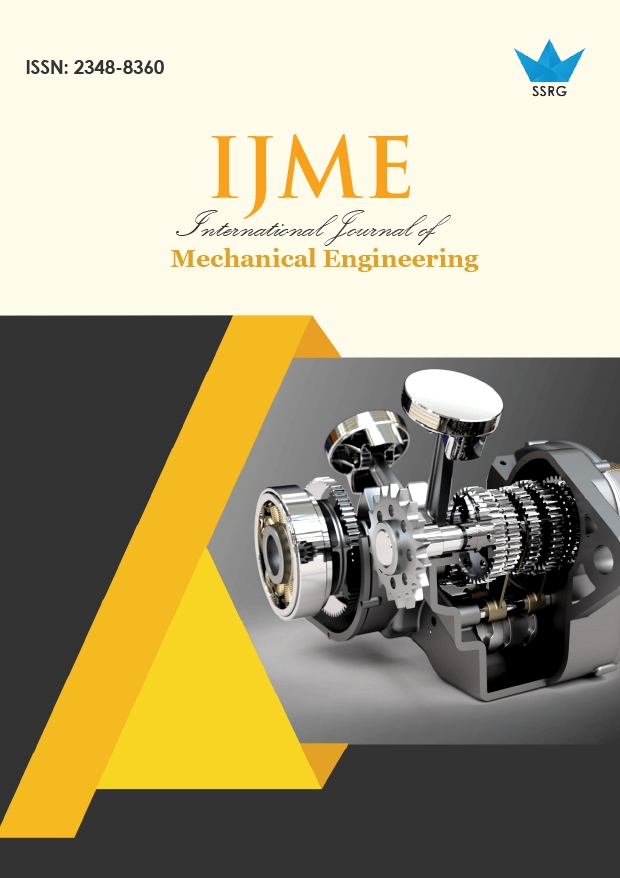Design and Evaluation of Electric Bus Systems for Metropolitan Cities

| International Journal of Mechanical Engineering |
| © 2020 by SSRG - IJME Journal |
| Volume 7 Issue 10 |
| Year of Publication : 2020 |
| Authors : Unnikrishnan Menon, Divyani Panda |
How to Cite?
Unnikrishnan Menon, Divyani Panda, "Design and Evaluation of Electric Bus Systems for Metropolitan Cities," SSRG International Journal of Mechanical Engineering, vol. 7, no. 10, pp. 16-23, 2020. Crossref, https://doi.org/10.14445/23488360/IJME-V7I10P104
Abstract:
Over the past decade, most of the metropolitan cities across the world have been witnessing a degrading trend in air quality index. Exhaust emission data observations show that promotion of public transport could be a potential way out of this gridlock. Due to environmental concerns, numerous public transport authorities harbor a great interest in introducing zeroemission electric buses. A shift from conventional diesel buses to electric buses comes with several benefits in terms of reduction in local pollution, noise, and fuel consumption. This paper proposes the relevant vehicle technologies, powertrain, and charging systems, which, in combination, provides a comprehensive methodology to design an Electric Bus that can be deployed in metropolitan cities to mitigate emission concerns.
Keywords:
Electric Vehicles, Public Transport, Motor Specification, Powertrain, LTO Battery, Power Conversion, Charging Technology.
References:
[1] Cheng, K. (2009). The recent development of electric vehicles. In 2009 3rd International Conference on Power Electronics Systems and Applications (PESA) (pp. 1–5).
[2] Schmid, A. (2017). An Analysis of the Environmental Impact of Electric Vehicles Missouri, S&T's Peer to Peer, 1(2), 2.
[3] Aditya, C., Deshmukh, C., Nayana, D., & Vidyavastu, P., Detection and prediction of air pollution using machine learning models, international Journal of Engineering Trends and Technology (IJETT). 59(4) (2018).
[4] Public Transport Developments in Indian Cities.
[5] Glotz-Richter, M., & Koch, H, Electrification of public transport in cities (Horizon 2020 ELIPTIC Project) Transportation Research Procedia, 14 (2016) 2614–2619.
[6] Göhlich, D., Fay, T.A., Jefferies, D., Lauth, E., Kunith, A., & Zhang, X, Design of urban electric bus systems Design Science, 4 (2018).
[7] Straubel, J, Tesla All Wheel Drive (Dual Motor) Power and Torque Specifications, (2016)
[8] Wu, X., Zheng, D., Wang, T., & Du, J. Torque optimal allocation strategy of all-wheel-drive electric vehicles based on the difference of efficiency characteristics between axis motor synergies, 12(6) (2019) 1122.
[9] Zhang, H., Huang, X., Wang, J., & Karimi, H. Robust energy-to-peak sideslip angle estimation with applications to ground vehicles Mechatronics, 30 (2015) 338–347.
[10] Shuai, Z., Zhang, H., Wang, J., Li, J., & Ouyang, M. Lateral motion control for four-wheel-independent-drive electric vehicles using optimal torque allocation and dynamic message priority scheduling control Engineering Practice, 24 (2014) 55–66.
[11] Jape, S., & Thosar, A. Comparison of electric motors for electric vehicle application” international Journal of Research in Engineering and Technology, 6(09) (2017) 12–17.
[12] Porselvi, T., Srihariharan, M., Ashok, J., & Kumar, S. Selection of power rating of an electric motor for electric vehicles International Journal of Engineering Science and Computing IJESC, 7(4) (2017).
[13] Zheng, Q., Tian, S., & Zhang, Q. Optimal Torque Split Strategy of Dual-Motor Electric Vehicle Using Adaptive Nonlinear Particle Swarm Optimization Mathematical Problems in Engineering. (2020)
[14] Urbina Coronado, P., & Ahuett-Garza, H. Control strategy for power distribution in a dual-motor propulsion system for electric vehicle Mathematical Problems in Engineering. (2015).
[15] Bandhauer, T., Garimella, S., & Fuller, T. A critical review of thermal issues in lithium-ion batteriesJournal of the Electrochemical Society, 158(3) (2011) R1.
[16] Deng, D. Li-ion batteries: basics, progress, and challenges energy Science & Engineering, 3(5) (2015) 385–418.
[17] Ding, N., Prasad, K., & Lie, T. (2017). The potential Li 4 Ti 5 O 12 battery product applications for New Zealand electric buses”. In 2017 24th International Conference on Mechatronics and Machine Vision in Practice (M2VIP) (pp. 1–7).
[18] Rothgang, S., Rogge, M., Becker, J., & Sauer, D. Battery design for successful electrification in public transport energies. 8(7) (2015) 6715–6737.
[19] Rathore, A., Bhat, A., & Oruganti, R. A comparison of soft-switched DC-DC converters for the fuel cell to utility interface application, IEEE Transactions on Industry Applications. 128(4) (2008) 450–458.
[20] Tomaszewska, A., Chu, Z., Feng, X., O'Kane, S., Liu, X., Chen, J., Ji, C., Endler, E., Li, R., Liu, L., & others, Lithium-ion battery fast charging: a reviewETransportation, 1, 100011 (2019). .
[21] Mallick, K.. (2017). Bharat EV specifications for AC and DC charging.
[22] Hu, X., Li, S., & Yang, Y.. Advanced machine learning approach for lithium-ion battery state estimation in electric vehicles, IEEE Transactions on Transportation Electrification, 2(2) (2015) 140–149.
[23] Janardan Prasad Kesari, Yash Sharma, Chahat Goel, Opportunities and Scope for Electric Vehicles in India, SSRG International Journal of Mechanical Engineering. 6.5 (2019) 1-8.

 10.14445/23488360/IJME-V7I10P104
10.14445/23488360/IJME-V7I10P104